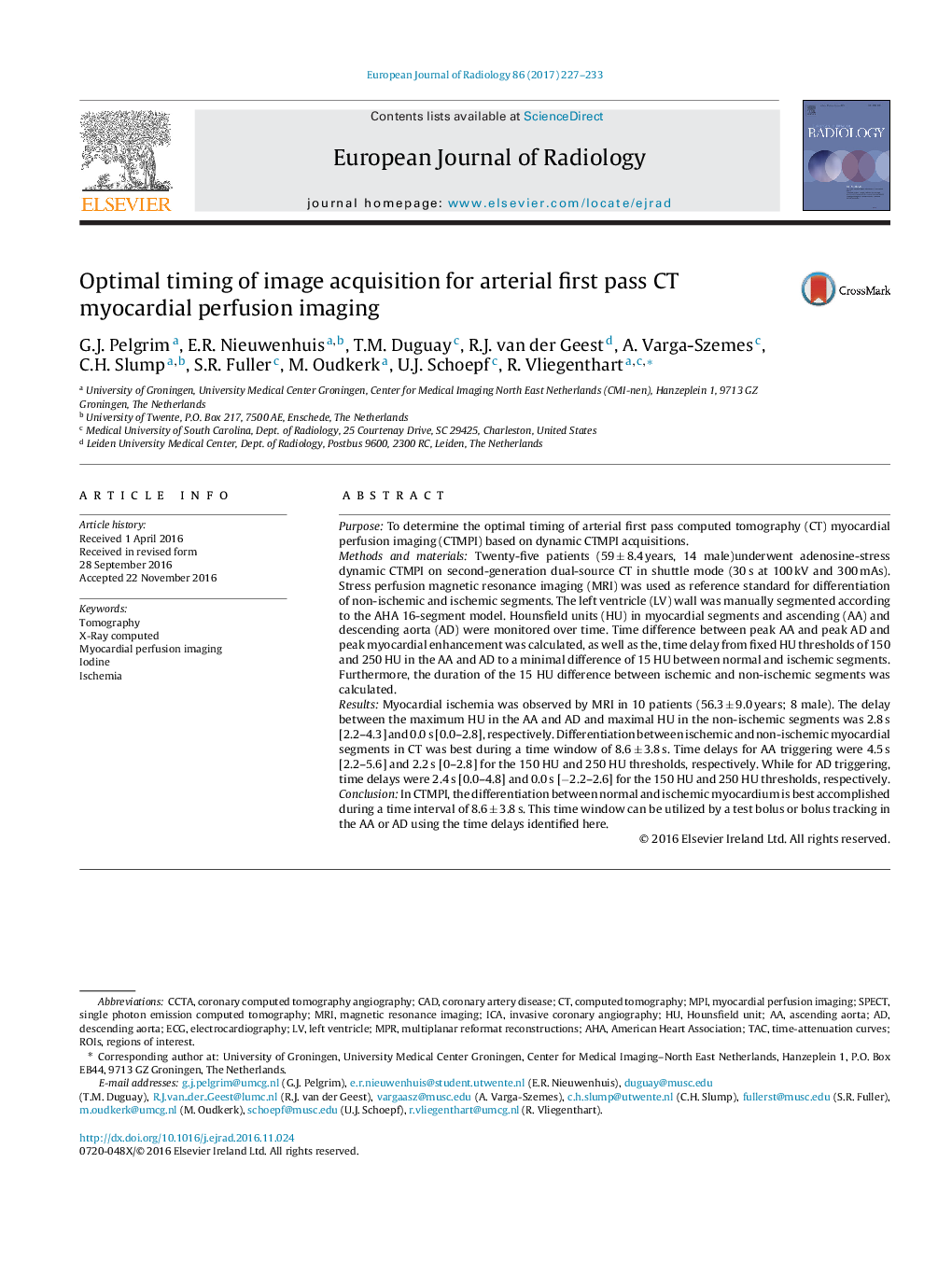| Article ID | Journal | Published Year | Pages | File Type |
|---|---|---|---|---|
| 5726136 | European Journal of Radiology | 2017 | 7 Pages |
â¢Optimal timing of static, single-shot CT perfusion scans is important to differentiate ischemic from non-ischemic myocardial segments.â¢Time delay between reaching 150 and 250 HU thresholds in the ascending aorta and optimal contrast in the myocardium are 4 and 2 s, respectively.â¢Attenuation difference of more than 15 HU between normal and ischemic myocardium is present during approximately 8 s.
PurposeTo determine the optimal timing of arterial first pass computed tomography (CT) myocardial perfusion imaging (CTMPI) based on dynamic CTMPI acquisitions.Methods and materialsTwenty-five patients (59 ± 8.4 years, 14 male)underwent adenosine-stress dynamic CTMPI on second-generation dual-source CT in shuttle mode (30 s at 100 kV and 300 mAs). Stress perfusion magnetic resonance imaging (MRI) was used as reference standard for differentiation of non-ischemic and ischemic segments. The left ventricle (LV) wall was manually segmented according to the AHA 16-segment model. Hounsfield units (HU) in myocardial segments and ascending (AA) and descending aorta (AD) were monitored over time. Time difference between peak AA and peak AD and peak myocardial enhancement was calculated, as well as the, time delay from fixed HU thresholds of 150 and 250 HU in the AA and AD to a minimal difference of 15 HU between normal and ischemic segments. Furthermore, the duration of the 15 HU difference between ischemic and non-ischemic segments was calculated.ResultsMyocardial ischemia was observed by MRI in 10 patients (56.3 ± 9.0 years; 8 male). The delay between the maximum HU in the AA and AD and maximal HU in the non-ischemic segments was 2.8 s [2.2-4.3] and 0.0 s [0.0-2.8], respectively. Differentiation between ischemic and non-ischemic myocardial segments in CT was best during a time window of 8.6 ± 3.8 s. Time delays for AA triggering were 4.5 s [2.2-5.6] and 2.2 s [0-2.8] for the 150 HU and 250 HU thresholds, respectively. While for AD triggering, time delays were 2.4 s [0.0-4.8] and 0.0 s [â2.2-2.6] for the 150 HU and 250 HU thresholds, respectively.ConclusionIn CTMPI, the differentiation between normal and ischemic myocardium is best accomplished during a time interval of 8.6 ± 3.8 s. This time window can be utilized by a test bolus or bolus tracking in the AA or AD using the time delays identified here.
